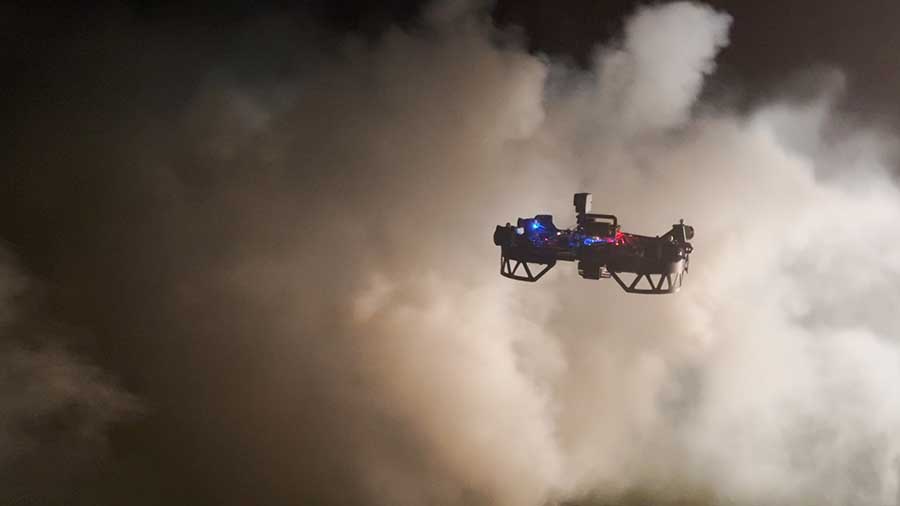Combating deadly wildfires has proven a daunting challenge for firefighters, even with state-of-the-art drone technologies.
Carnegie Mellon University’s Robotics Institute is working on developing technology to improve that. The institute works on building an autonomous drone that can fly low enough to relay timely terrain and fire information to minimize firefighter risks, according to doctoral student Andrew Jong, lead researcher on the project.
“The team aims to use AI to help automatically avoid power lines, thin branches, and other obstructions hidden in the smoke,” Jong told Technical.ly “In doing so, firefighters will be able to quickly gather vital close-up information in high-risk environments.”
After years of development, a baseline version of the tech should be available by the end of 2024, and testing will start locally in 2025, according to the researchers.
The drones tell firefighters how to allocate limited resources
The Robotics Institute has been exploring opportunities for improving the situational awareness of firefighters since 2020 as part of a low flying drone project funded by the US Department of Agriculture.
According to the department, the drones that will be used to fight fires also create a 3D understanding of the terrain impacted by wildfires.
Timely information helps firefighters allocate resources efficiently based on where lives and homes are at stake. In places where wildfires meet urban areas, this helps triage vulnerability, according to the department. The drone technology is particularly useful in situations where firefighters possess limited resources, Jong said.
“For example, they have trained models to detect fire assets like crew and trucks from long wave-infrared cameras mounted on the drone,” Jong said. “Now, they are leveraging AI to enable the drone to quickly and safely navigate smoky and hazardous conditions, a task that’s extremely challenging with manual piloting alone.”
Testing still needed before deploying the drones in the field
The Robotics Institute is currently in talks to start testing its drone technology, according to Jong.
Testing sites include the San Bernardino County Fire Department in California, firefighters in British Columbia and Oregon’s Bring Back Forestry initiative.
In most of these cases, the firefighters expressed an interest in testing the technology to gain greater and more timely awareness of escape routes. The drones could show people on the ground drop points, the way out of the fire and whether the fire is on the ground or in the trees, said Sean Hendrix, base manager of Grayback Forestry in Oregon and a firefighter.
For now, the institute is focusing on “learning more about the problems” faced by firefighters, Jong said. The team is “eager to test with firefighter training once the proof of concept for our drone project is ready.”
Before you go...
Please consider supporting Technical.ly to keep our independent journalism strong. Unlike most business-focused media outlets, we don’t have a paywall. Instead, we count on your personal and organizational support.
Join our growing Slack community
Join 5,000 tech professionals and entrepreneurs in our community Slack today!

Entrepreneurship is changing, and so is the economic development behind it

Future Pittsburgh: Here’s what people think it’ll be like 250 years from now

A Pittsburgh fashion designer wants to redefine how businesses approach manufacturing



